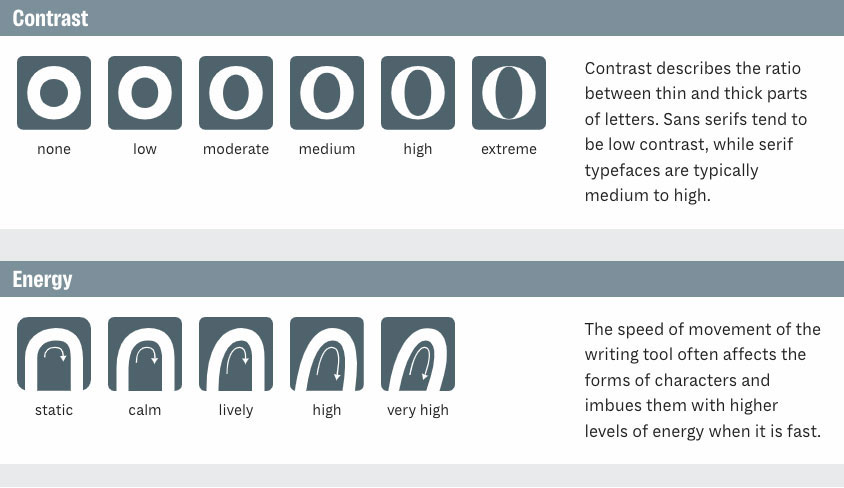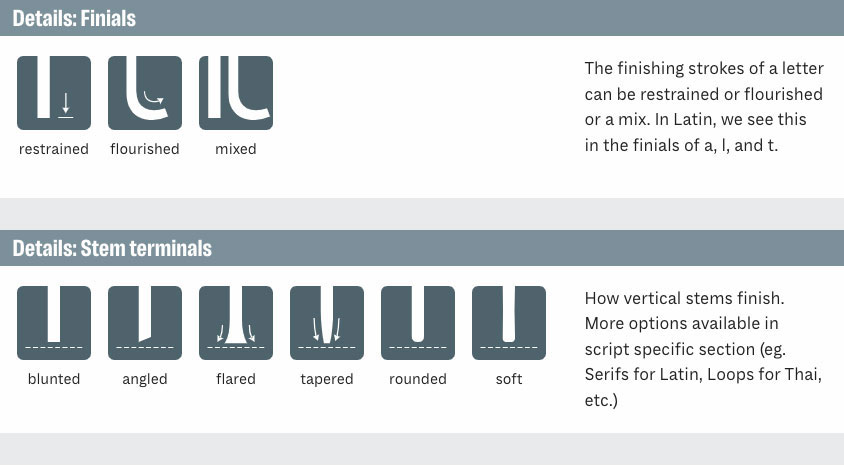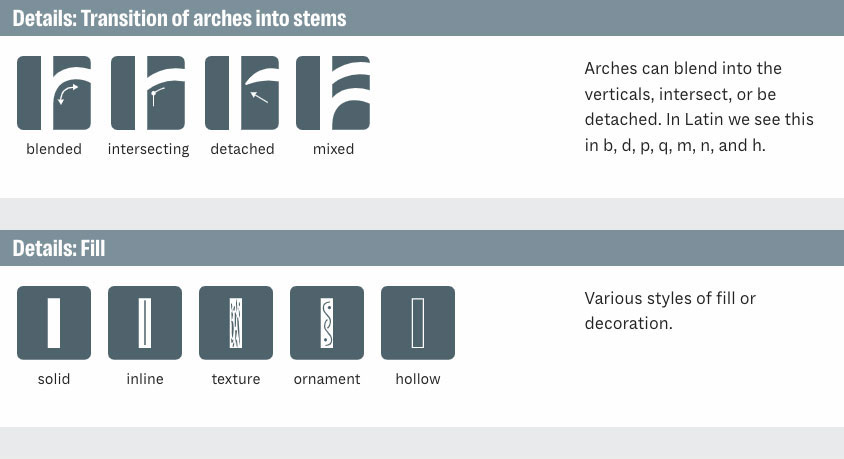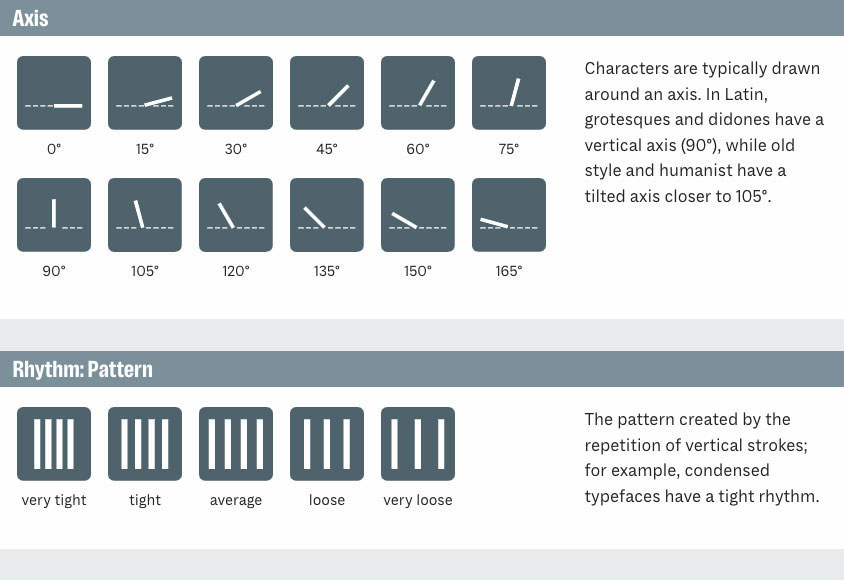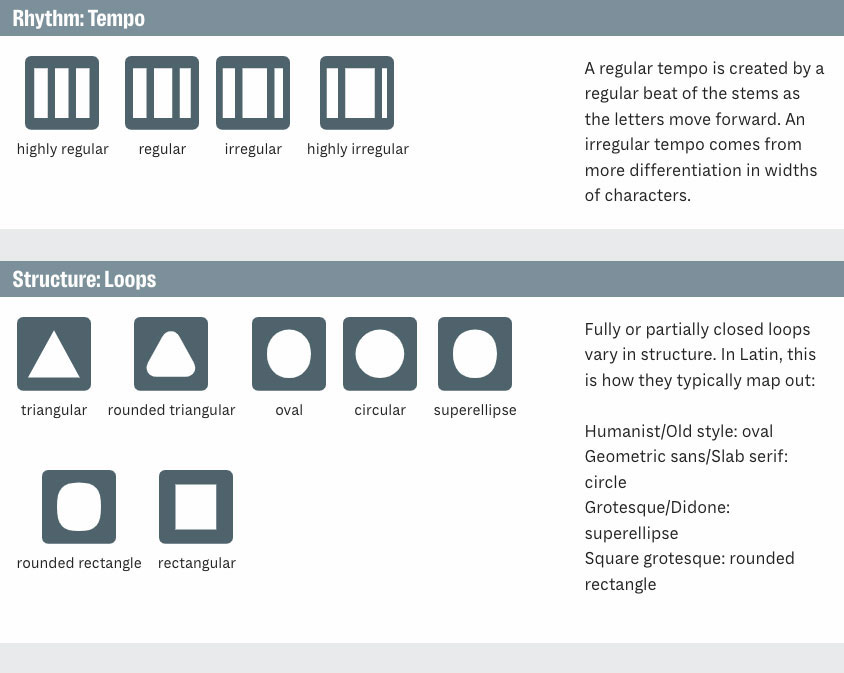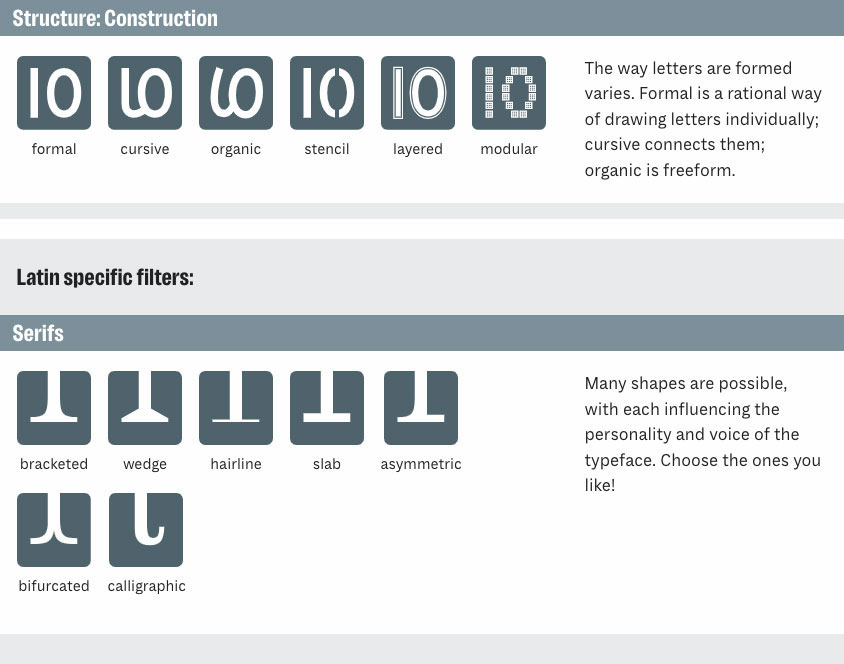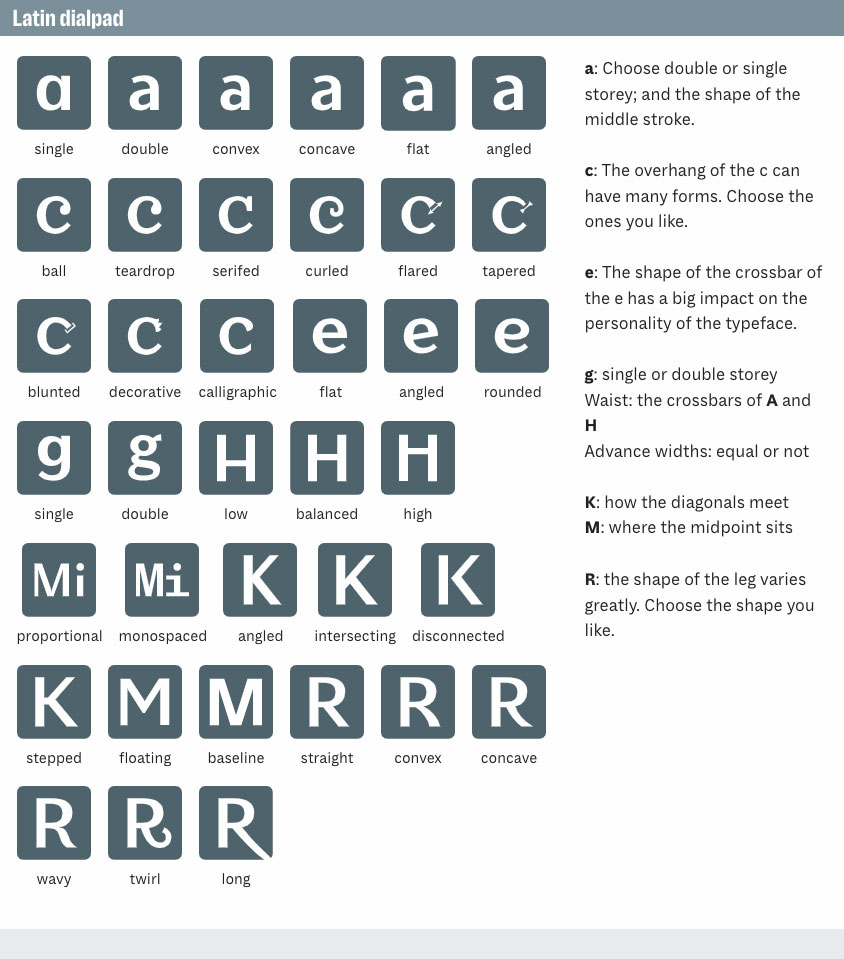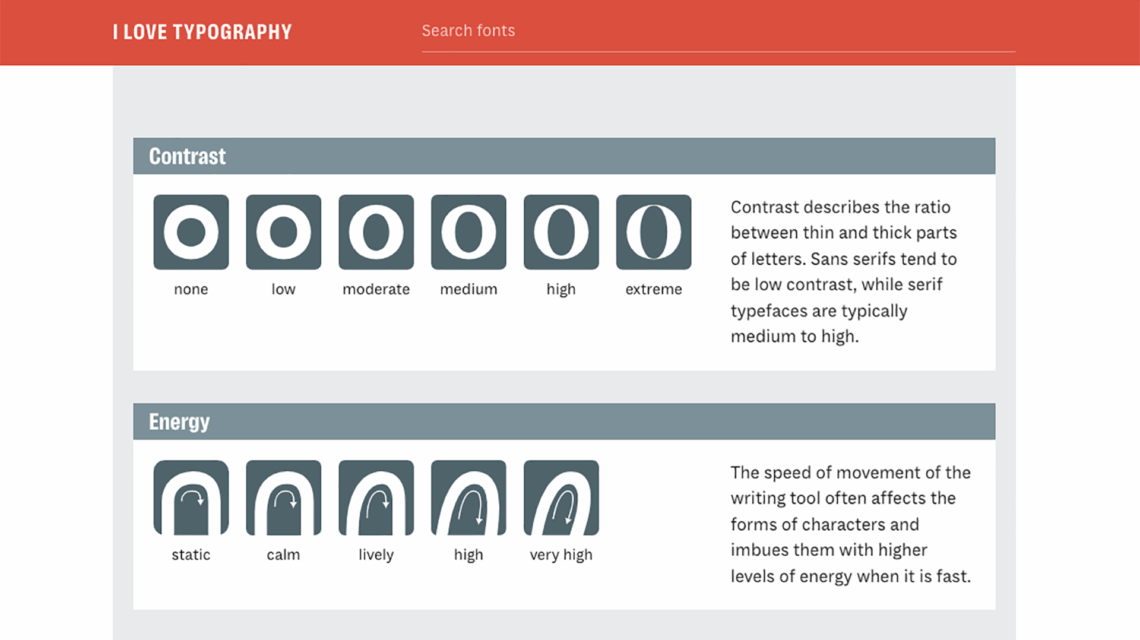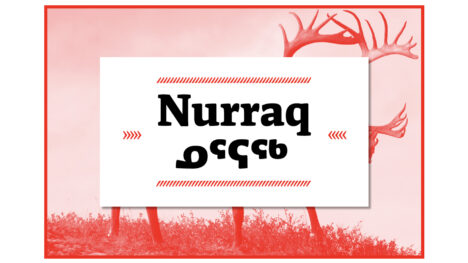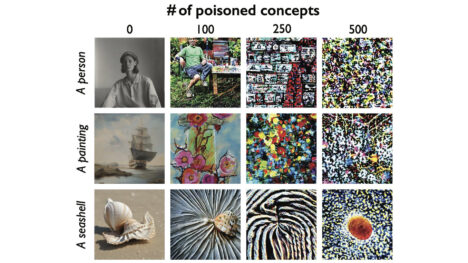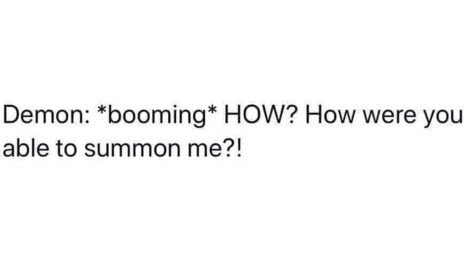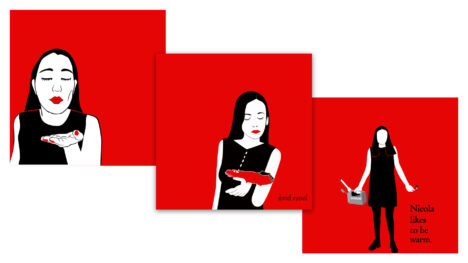Type descriptions and filters like the below find their way into my most fervid dreams.
The talented and hardworking presentation designer Mimi Heft (https://www.mimiheftdesign.com/) told me about Ilovetypography.com. Hire her for all your presentation needs! Original post is at https://fonts.ilovetypography.com/cedars?mc_cid=b9d99d1a93&mc_eid=b2ec9d6f4f.
CEDARS+ is a new and revolutionary way to describe type via formal characteristics resulting from the movement of the writing tool that created the letterforms and the path it traces. Here you are able to filter your selection based on the following:
Contrast: how much difference between thin and thick parts of the letter
Energy: the energy level based on speed of movement of the tool drawing the letter
Details: how the finials look; how the stems finish; how arches transition into vertical strokes; and how the outlines of letters are filled
Axis: this relates to the angle at which the writing tool is cut and held
Rhythm: if it is tight or loose; and the difference in width between narrow and wide letters
Structure: the forms of closed loops and how letters are constructed
Latin specific descriptors!
Hx: proportion of x-height to cap height
Serifs: pick the shape you like!
Waist: height of the crossbars of A and/or H
Advanced widths: if the typeface is proportional or monospaced
a: single or double storey; and the shape of the middle stroke
c: shape of the overhanging terminal
e: shape of the crossbar
g: single or double storey
K: how the diagonal strokes meet
M: where the midpoint sits
R: shape of the leg
